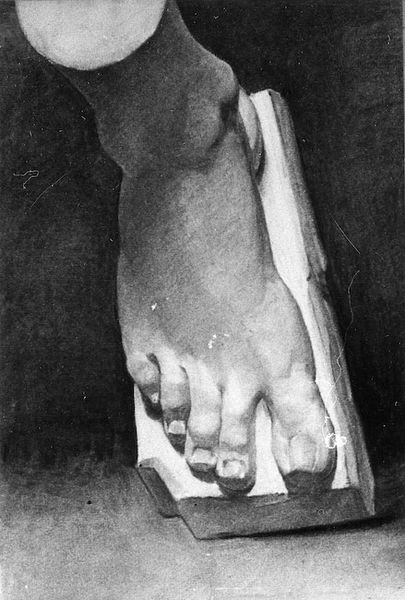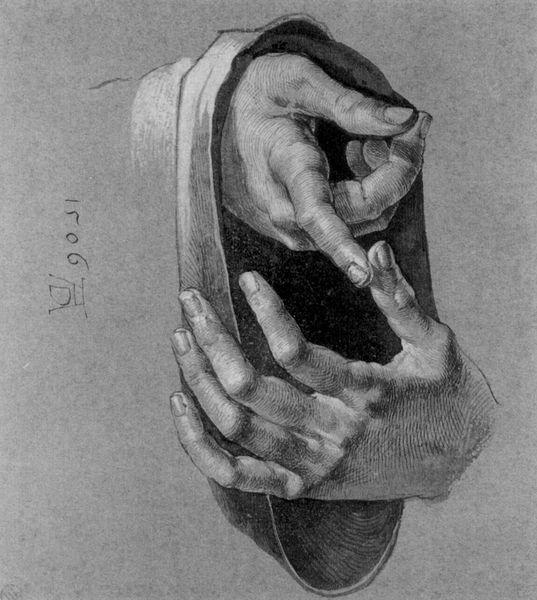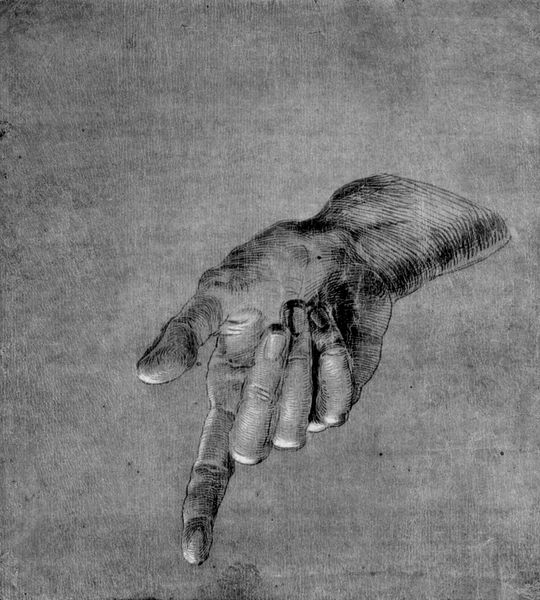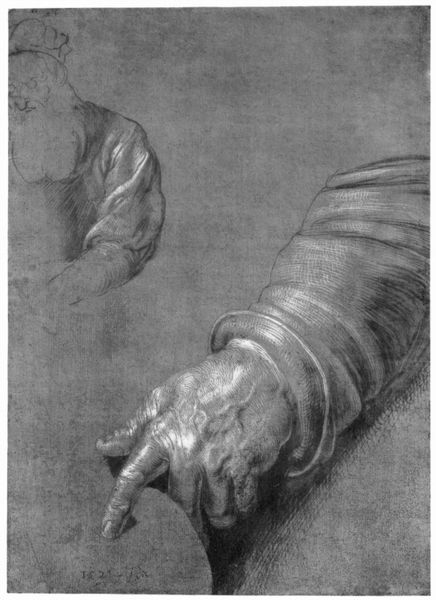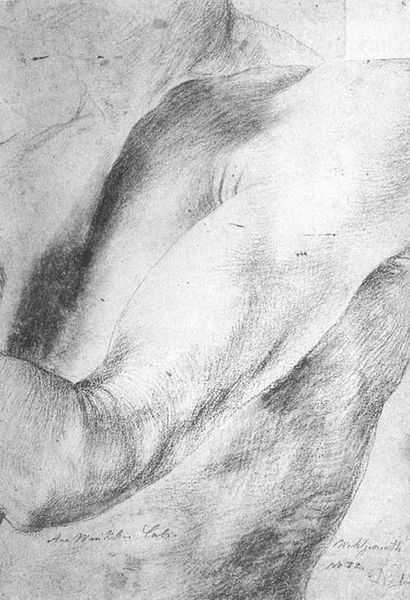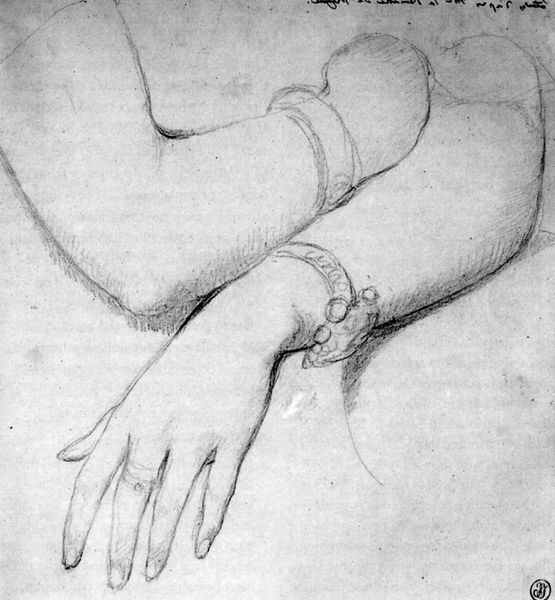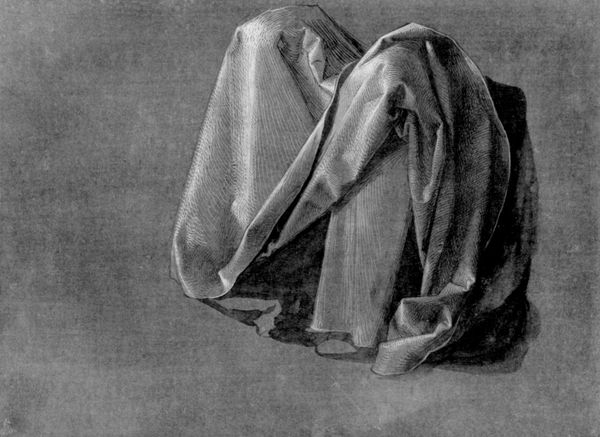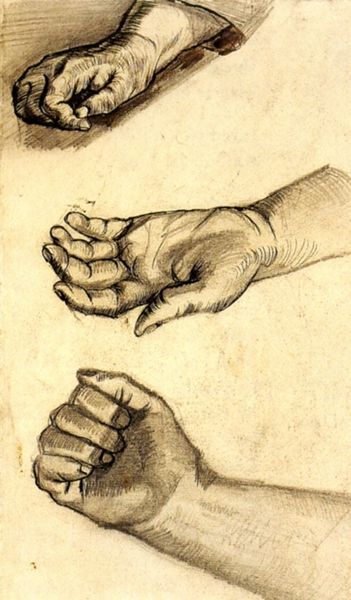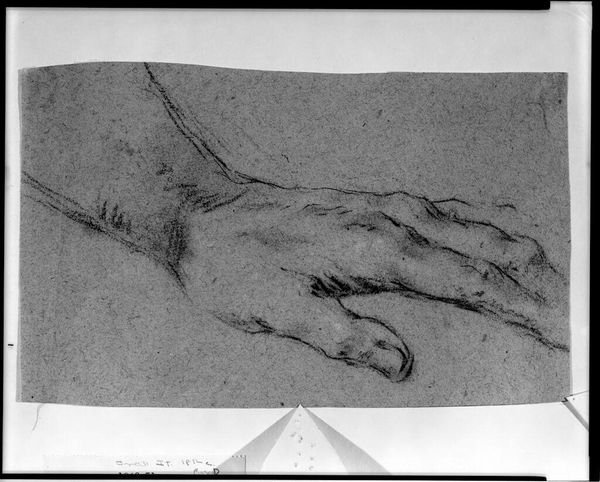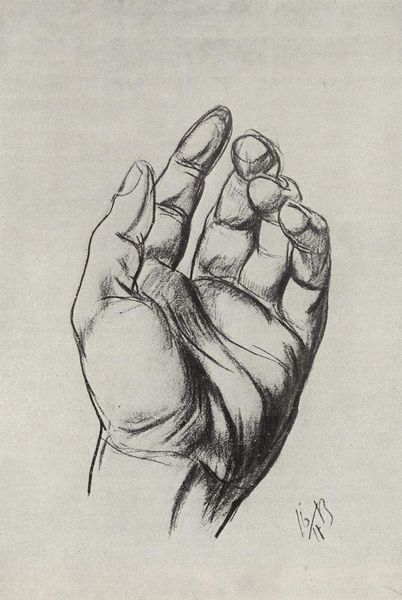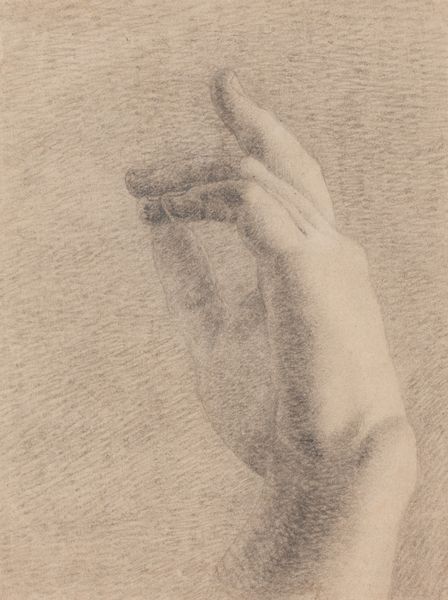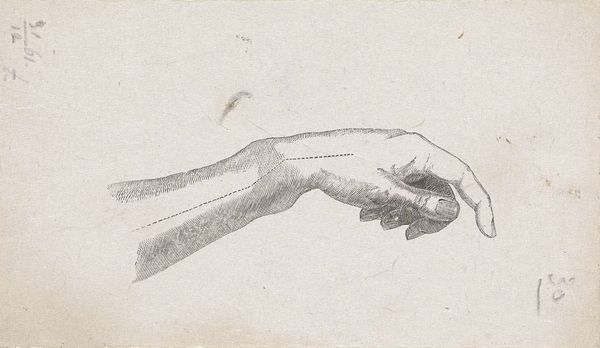
drawing, paper, photography, charcoal
#
portrait
#
drawing
#
sculpture
#
black and white format
#
charcoal drawing
#
figuration
#
paper
#
form
#
11_renaissance
#
charcoal art
#
photography
#
sketch
#
black and white
#
charcoal
#
northern-renaissance
#
charcoal
#
monochrome
Copyright: Public domain
Editor: Here we have Albrecht Dürer’s, "Left Hand of an Apostle," a charcoal drawing on paper. There's something quite captivating in the stark contrast and detail of just this hand. What strikes you most about it? Curator: For me, it’s the very process of its creation. Dürer meticulously builds up the form using charcoal, a readily available and relatively inexpensive material. It’s a prime example of how "high art" can emerge from humble origins. Think about the labor involved. This wasn’t just a casual sketch. This was about intense observation, the mastering of technique, and, importantly, making that skill visible. Editor: So, you are focusing less on who this Apostle may be and more on the work itself. Curator: Precisely. Who the apostle *is* becomes secondary to the artistry in representing flesh and fabric. Dürer elevates the hand, a symbol of human labor, into a subject worthy of intense artistic scrutiny. Consider also the paper itself, its texture accepting and displaying the granular nature of the charcoal. Did he prepare the paper in any specific way? What choices drove Dürer to work in this manner? These considerations offer us more of an understanding of his intentions, his time. Editor: I hadn’t really thought about the significance of charcoal itself. Now that you mention it, choosing a cheaper, more accessible material really does change my perspective on this being more about labor than some grand religious statement. Curator: Exactly. The texture isn't just representational; it's a testament to the materials' inherent qualities. This piece compels us to contemplate not just *what* is depicted but *how* it came into being and what means were at Dürer's disposal. Editor: I see your point! Thinking about the 'how' and 'why' of Dürer's material choices definitely makes me appreciate this piece even more. It's less about divine representation, and more a human story of skillful creation with readily available material. Curator: Yes, the transformation of material through labour.
Comments
No comments
Be the first to comment and join the conversation on the ultimate creative platform.
